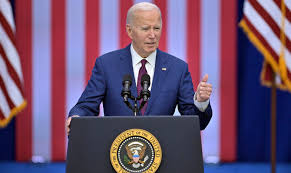
Fed Orchestrated telegraphed three cuts from the anticipated seven quarter-point rate cuts this year, with some members chattering the possibility of maybe none/ no rate cuts this year.
Meanwhile, little attention was given to the fiscal spending side. Mr.Jamie Dimon emphasized it today in his annual letter; He noted "the economy is being fueled by large amounts of government deficit spending and past stimulus."
On the latter, the chart of money Supply inprospective to massive monetary and fiscal response to the pandemic (plus the subsequent agenda spending binge) however, ramped the money supply by 40% in just two years. That was almost ten year's worth of money supply growth to support the economy over just two years.
The money supply remains trillions of dollars above trend. And President Biden's proposed 2025 budget would require printing another $1.8 trillion which is said to be more than the government will collect in taxes. That translates to 6.1% of GDP. He wants to increase taxes on corporations by $2.1 trillion over ten years, in part by increasing the rate companies pay from 21% to 28%, while also capturing more of their foreign earnings without any lackadaisical underestimation.
While the rate of change in prices has slowed, those trillions of dollars in excess money supply have underpinned the nominal price of stuff. That goes for GDP (the total market value of economic output). And that goes for the nominal revenues and earnings of companies respectively.
With that, we kick off "Q1 earnings season" later this week, with the big banks theory. Despite,the backdrop, corporate America has spent the past three months dialing down expectations on "Q1", lowering the bar so they can step over it.
Earnings growth estimates for the S&P 500 have been lowered to 3.2% year-over-year growth (from 5.7% heading into the quarter). Keep in mind, that was in a quarter where the economy is expected to have grown at an annual rate of about 2.5% (a strong pace).
Approaching another anticipated earnings season with the set up for positive surprises.Before the banks report , and March CPI.
Remember,Mr.Jerome Powell laid out conditions in his post-FOMC press conference last month, that would warrant starting the easing cycle:
* Unexpected weakening in the labor market.
* The continued trend of falling inflation, toward the target and/or 3) any stress bubbling up in money markets (i.e. a liquidity shock).
It seems unlikely that the March inflation report will show progress on falling inflation and the set up for a correction of stocks.
It looks like a technical correction is underway and if so, the appetite to buy the dip, particularly in the "AI theme", will be very healthy.
